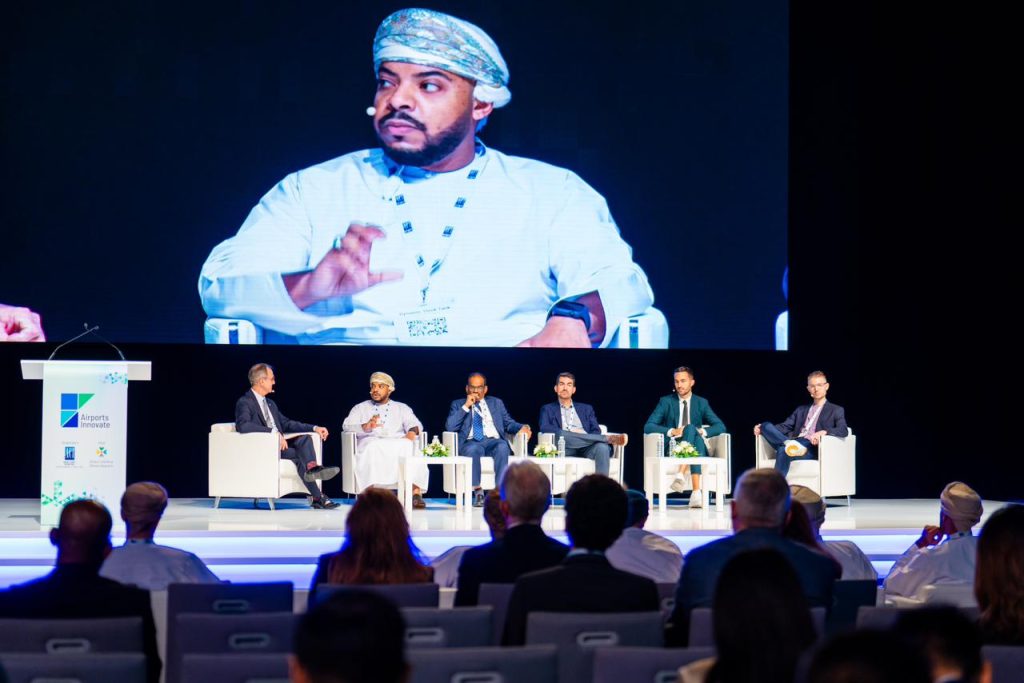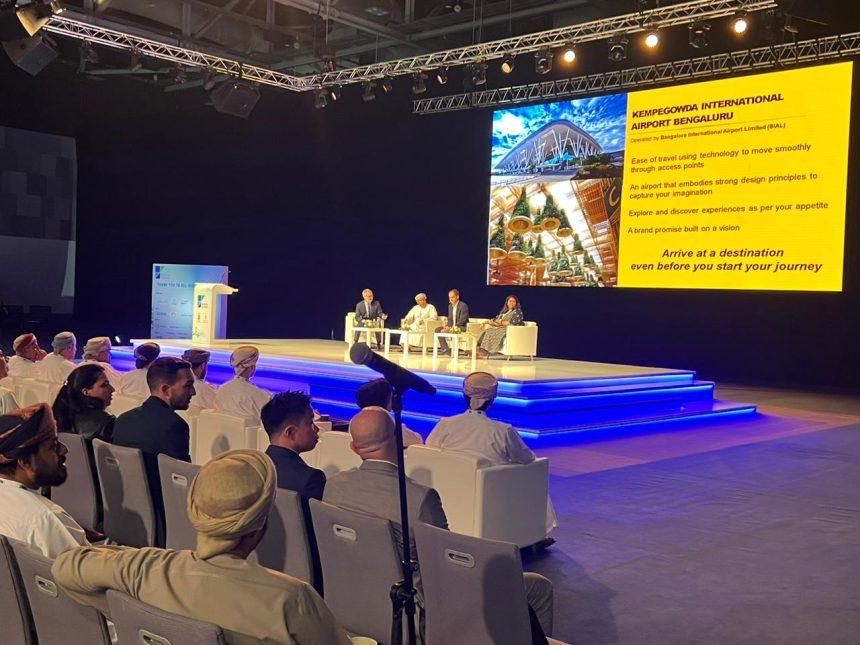“Workshop Papers Advocate for a Qualitative Leap in Airports to Enhance Travel Experience Through the Use of Technologies
Digital Transformation Creates a Dynamic and Engaging Environment for Travelers in Airports
Discussion on the Importance of Using Renewable Energy and Waste Reduction for Sustainability
Artificial Intelligence Will Propel Airports to a Faster Transition to the Future
Participants in the Airport Innovation Conference and Exhibition concluded the working sessions today, Wednesday, at the Oman Convention and Exhibition Center, hosted by the Sultanate of Oman represented by “Oman Airports” in collaboration with the Airports Council International, during the period from November 20 to 22, 2023.
Over two days, participants discussed numerous workshop papers during lively discussions about the future of innovation in the airport sector by focusing on the latest trends, developments, and technological innovations in the airport sector. CEOs and experts representing airports worldwide presented visual presentations discussing the sector’s readiness for innovation, the world of artificial intelligence, and the latest technologies and innovations designed to improve the travel experience and operational practices in the airport sector. Fourteen global institutions showcased their latest products dedicated to airports in the exhibition held on the sidelines of the conference, where, alongside global companies, several local tech companies participated to showcase their innovations in aviation and airports.
The second-day sessions addressed the brand strategy and innovation as new steps for brand innovation focusing on customers, considering airports are no longer just transit centers but captivating destinations for both travelers and non-travelers alike. Airport operators now invest significant resources in marketing strategies and comprehensive brand-building to establish themselves as reputable brands. Loyalty programs, a modern concept in airports not previously emphasized, have become part of strategies aimed at building a positive perception among passengers.

Participants also discussed creating a dynamic and comfortable environment through art and culture as another way to create a sense of place. Airports now harness the influential marketing power to engage with travelers through innovative marketing initiatives and brands, striving to create lasting impressions and ultimately drive revenue streams.
Another workshop paper discussed the complete process of digitization, operational excellence, enhancing passenger experience within the airport environment, focusing on increasing income, facilitating cost improvement, and reducing the carbon footprint. Communication continuously plays an increasingly crucial role, becoming one of the core strategic assets of the airport, comparable in importance to the runway.
One conference session discussed the role of airports in establishing labs and innovation centers in the airport environment to achieve success by leveraging the dual benefit of airports to implement the latest technologies by supporting small startups and individual developers to use the airport as a realistic testbed from concept to later marketing. In these sessions, participants presented the best successful project sponsored by these centers.
Through innovation, airports can ensure their leadership in this technological revolution that will deepen the potential benefits in the future aviation industry.
Workshop sessions also discussed data in the airport sector to improve operational performance, increase customer experience development, and increase new revenue flows.
A panel discussion addressed risk management to achieve sustainability and flexibility in airport operations, including renewable energy, water conservation, and waste reduction, effectively mitigating risks and enhancing airport resilience. The discussion session also touched on valuable insights into navigating key risks faced by airports, such as natural disasters, terrorism, and cyber threats, emphasizing the role of risk management and insurance in mitigating these risks to create sustainable and flexible airport environments.

“In the context of the current transitional green phase of airport infrastructure, which aims to contribute to carbon removal from the aviation industry, the conference addressed a toolkit to assist airports in identifying the most efficient and effective ways to finance this transition.
Regarding the role of generative artificial intelligence as new opportunities for airport management to enhance non-aeronautical revenue streams, participants emphasized the importance of leveraging advanced natural language capabilities. They affirmed that generative artificial intelligence can help create targeted concepts for retail, food, and entertainment in line with the passenger demographic and preferences. Additionally, generative artificial intelligence can assist in redesigning dynamic digital advertising platforms, allowing airports to customize promotional offers and partnerships in real-time based on passenger flows, seasonal travel trends, and other data sources.
With the creative potential of artificial intelligence, airport managers can develop innovative comfort amenities, services, and revenue-generating promotions that complement core aviation operations. While ensuring efficient and safe core operations remains a priority, generative artificial intelligence provides airport management with an emerging tool to creatively enhance non-ticket-related revenue sources.
The conference also delved into the carbon footprint impact of baggage journeys, stating that it is time to focus on reducing the environmental impact of baggage journeys to completely eliminate carbon from the aviation industry.
Workshop sessions also discussed the role of technology as a key means to achieve a more obstacle-free transportation system. This involves implementing innovative solutions to facilitate the journey for passengers with disabilities, contributing to creating a seamless travel experience through new access pathways.
One workshop paper emphasized that despite technological progress and the implementation of automated equipment to enhance efficiency and productivity, machines cannot replace the workforce at airports. The session called on human resource experts worldwide to share initiatives to ensure the readiness of the aviation workforce for the future. This is particularly crucial as, three years after the pandemic, many skilled professionals in the aviation sector have left their jobs for better and clearer job opportunities in other sectors.
Airport leaders discussed how to embed an innovation culture within the airport ecosystem and the challenges they face. By encouraging and embracing innovation throughout the airport, balancing the adoption of innovative ideas, and adapting them, airports can thrive in the quality of their operations and services.
In light of the industry trends and continuous technological changes, participants discussed how to build a smart, green, expandable, and architecturally simple airport of the future. This relies on maximizing expertise and using the next generation of all-optical networking solutions and visual sensor perimeter solutions based on service scenarios.
One participant presented a workshop paper on future airports, focusing on the design of airports of tomorrow, sustainable architecture, self-driving shuttles, and intelligent infrastructure for seamless communication.
The conference sessions also addressed the role of airport operators in maximizing the benefits of artificial intelligence and big data in the future to streamline operations and provide a next-level travel experience. With artificial intelligence being increasingly applied in various aspects by airports to improve operational efficiency and enhance the overall passenger experience—whether through chatbot services, real-time baggage tracking, facial recognition for check-in and boarding, predictive data analysis to improve processes, and more—many expect artificial intelligence and big data to be key drivers pushing airports to transition to the future.


